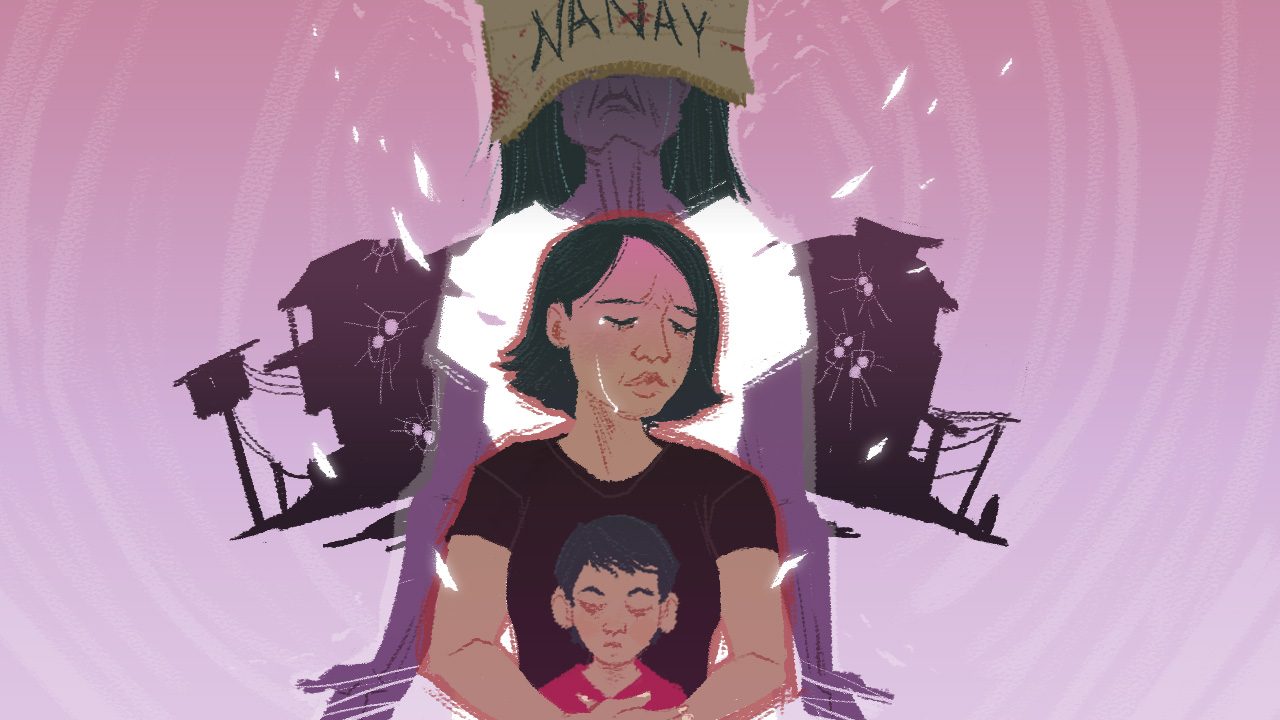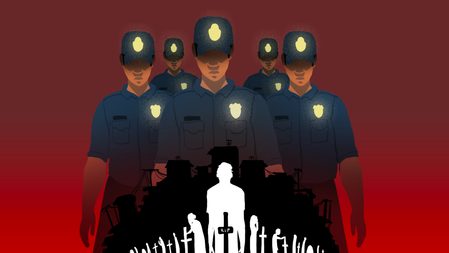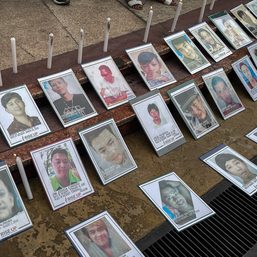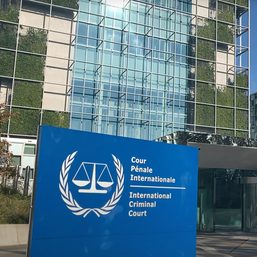SUMMARY
This is AI generated summarization, which may have errors. For context, always refer to the full article.

Editor’s Note: Rodrigo Duterte’s violent war on drugs mostly targeted men living in poorest communities across the Philippines. At least 6,252 people were killed in police operations between July 1, 2016 and May 31, 2022, not including victims of vigilante-style killings. This means that Duterte’s flagship project also resulted in thousands of grieving families, including widows and mothers, who are left to balance the role of being homemakers and breadwinners. To mark Mother’s Day on May 14, Rappler speaks to three people to revisit their stories and to know how they navigate their grief following the traumatizing incidents. This series features a mother who lost her son, a widow who lost three loved ones in one night, and a daughter who misses her mother’s guiding light as she raises her own child.
PART 1 | Not losing hope: Mother of drug war victim finds courage in helping other grieving families
PART 2 | Drug war widow: I must stay strong for my grandchildren
Last of 3 parts
MANILA, Philippines – President Rodrigo Duterte’s violent war on drugs did not only kill thousands of Filipinos in its wake, It also forced thousands of young children to grow old beyond their years.
It was close to midnight in October 2016 when Tanya* suddenly heard knocking on the door of her family’s one-room house in northern Metro Manila. They initially wanted to ignore it as they were about to fall asleep. But whoever was outside threatened to force their way into their house, leaving her mother and stepfather no choice but to step outside to check who their surprise visitors were.
While all this was happening, Tanya remembered all the violence that had erupted since Duterte was sworn into the presidency just four months prior. Some of the first victims were people from Tanya’s community in northern Metro Manila, neighbors whom she’d known her whole life.
“Kung ano-ano na po ang pumapasok sa isip ko noong narinig ko ang boses nila,” Tanya told Rappler in an interview. “Nakita ko rin sa kilos ng nanay ko na kinakabahan na rin siya na baka kung ano’ng mangyari.”
(A lot of things ran in my head when I heard their voices. I saw my mother also got nervous and scared about what might happen.)
Her parents sternly ordered Tanya to stay inside. She could sense the nervousness in her mother’s voice when she called one of the strangers “sir.” One of the men said they wanted to talk somewhere else.
Upon hearing this, Tanya decided to go out to see what was happening, and saw at least four men surrounding their house. She followed as the men escorted her parents, but her mother yelled for her to go back home. They will be back, she assured her daughter.
That was the last time Tanya saw her mother and stepfather alive.
At 16 years old, not even out of high school, Tanya had to identify two dead bodies within a span of two days. Her stepfather first, through a series of photos shown by the police. His dead body was found not far from their house, with at least six gunshot wounds.
Tanya had to delay her grief over her stepfather. Her mother was still missing, and she was at that point still hoping against hope Rosa* would be found alive. But a call received by their barangay (village) shattered everything. Her mother was found in a local cemetery. Her lifeless body had no gunshot wounds, but there were indications she was strangled to death.
“Nanlumo ako kasi sa kanya ako nakatira, sa kanya ako talaga lumaki,” she said. “Ang bata ko pa para mawalan ng nanay, ang bata pa ng mga kapatid ko, hindi ko alam kung paano ko sasabihin sa kanila na ganoon ang nangyari sa nanay namin.”
(I felt depressed and shocked because I lived with her, I grew up with her. My siblings and I were too young to lose our mother. I didn’t know how to tell them what happened to her.)
Tanya’s parents were separated. Her three younger siblings – then aged 15, 13, and 9 – lived with her biological father. He often took the children to their mother’s home for visits, sometimes Tanya and Rosa brought them out to nearby malls.
“Sila na ang mismong nakakita sa nanay namin,” Tanya recalled. “Iyong bunso kong kapatid, hindi siya lumaki kay mama, pero noong nakita niya ang kabaong, napaupo na lamang siya sa sahig at humagulgol na.”
(They saw for themselves what happened to our mother. My youngest sibling, he didn’t grow up with her, but when he saw the coffin, he collapsed on the floor and wailed.)

Growing up to violence
Tanya was only in Grade 11 when her life changed. Not even three months into the new school, Tanya had to excuse herself from classes to find her missing mother, to handle her funeral arrangements, and to bury her.
She decided to temporarily stay in an uncle’s house after her mother’s burial, hoping to rest and get her mind off things. That decision may have saved her life.
The night after her mother was buried, Tanya’s neighbors said strangers visited their house again and asked around about the family. The description of the men matched those Tanya saw the night her mother and stepfather disappeared.
“Sobrang traumatized ako kaya hindi ako lumabas ng bahay na walang kasama, hindi na rin ako dumadaan doon sa mga lugar kung saan nakita ang katawan ng nanay at stepfather ko kasi sobrang takot na takot ako,” she said.
(I was so traumatized that I didn’t even go out of the house alone, I stopped passing by the places where the bodies of my mother and stepfather were found because I was so scared.)
Going to the police was not an option for Tanya, even if she feared what could happen next. They weren’t that much help when they first approached them when men abducted her parents, she said. The police did not even investigate what happened, nor offered any assistance afterwards.
By then, Tanya still was not sure why her parents were killed. She knew people who were killed in anti-illegal drug operations conducted by the police. But her stepfather had long stopped using drugs, even before Duterte came to power. Her mother, meanwhile, never used illegal drugs.
Tanya’s younger siblings did not ask questions about the circumstances surrounding their mother’s death. They grew up witnessing more incidents of violence in their community, enough to connect their mother’s fate with others.
“Naintindihan na nila iyong nangyari kasi sa paligid nila may mga kaparehong insidente so alam nila na delikado talaga,” she said. “Sa lugar nila, mas maraming patayan, malapit sila sa lugar kung saan ginagawang tapunan ng mga bangkay.”
(They understood what was happening because there were similar incidents in their own area, they knew how dangerous things were. There were even more killings in their own neighborhood. They even live near a known dumping ground of dead bodies.)
At least 1,736 people were already killed in police anti-illegal drug operations by the end of October 2016, the month Tanya’s mother was killed. There were 1,866 deaths under investigation, or what then-PNP chief and now Senator Ronald “Bato” dela Rosa, the architect of the drug war, tagged as those gunned down by unidentified suspects or whose bodies were found wrapped in garbage bags.
The death toll in police operations rose to at least 6,252 killed by May 2022, a month before Duterte’s term ended. Human rights groups estimate the number to reach between 27,000 to 30,000, to include victims of vigilante-style killings.
Missing mother’s guiding light
Almost seven years have passed since Tanya’s mother and stepfather were killed. In the time that elapsed, she finished high school and went to university. She also became a working student to support herself. She occasionally gave money to her three younger siblings, just enough for meals to last some days.
Life can get hard sometimes, but Tanya draws courage from the lessons her mother taught her. She remembers how her mother, a housewife with no source of income, hustled to have extra money because she did not want to rely too much on her husband.
Her mother never made her feel she was a burden. Instead, she encouraged Tanya to be more open and communicative about her feelings. Other teenagers her age did not have the same relationship with their parents, Tanya recalled.
Tanya is now 23 years old with a child of her own, and she admits emulating her mother in raising her toddler. She often wonders how different life would be if her mother were still alive.
“Nalulungkot ako talaga kasi kung naabutan ni mama iyong anak ko, panigurado katuwang ko siya sa pagpapalaki sa kanya, siya iyong magiging gabay ko,” she said. “Sobrang magiging malapit siguro sila sa isa’t isa.”
(I’m sad because she did not see her own grandchild. She would’ve guided and helped me raise her. They would’ve been so close.)
There are days when Tanya feels like she had already moved past her mother’s death. After all, it has been so long since. But seeing a picture, or even just hearing her mother’s name, brings back all the memories not just of the night she was killed, but of the life they had together.
She not only lost her mother, but her guiding light too. Since her mother’s death, Tanya has tried to find new guiding lights in other people.
“Siguro nabawasan na iyong sakit kasi maraming tumutulong sa akin pero umiiyak pa rin ako kapag naalala ko si mama,” she said. “Unti-unti na rin sigurong natatanggap pero alam ko na buong buhay ko itong bubuhatin.”
(The pain may have already eased because a lot of people helped me, but I still cry whenever I remember my mother. Maybe I’ve slowly accepted what happened to her, but I know I will always carry the trauma with me my whole life.)
‘I just want justice’
There is no pending case in court in relation to what happened to Tanya’s mother and stepfather, just like in thousands of other killings in Duterte’s war on drugs. The families themselves have chosen not to pursue legal routes, and instead pin their hopes on the International Criminal Court (ICC) to run after those who are responsible.
They are not to be blamed at all for losing hope in the Philippines. Families faced countless harassment and intimidation from state agents, even if they only wanted to get police reports. There have also been only a small number of drug war-related convictions, including the policemen involved in the killing of 17-year-old Kian delos Santos and the deaths of Carl Angelo Arnaiz and Reynaldo “Kulot” de Guzman.
It’s not lost on Tanya who is to blame for what happened to her mother, her stepfather, her neighbors, and thousands of other Filipinos. She wants Duterte to face the court and be convicted over his violent war on drugs that left thousands of widows and orphans.
Will President Ferdinand Marcos Jr. even run after his own ally? There are not many indications, based on his administration’s actions and appeals against ICC developments. In fact, the government’s rhetoric is straight out of the Duterte playbook too.
Tanya hopes Marcos opens his eyes and sees how thousands of families continue to suffer due to lack of justice.
“Hindi naman po maibabalik ang buhay ng mga mahal namin kahit anong gawin ng ICC, pero kung makakuha kami ng hustisya at maparusahan ang mga may kasalanan, sobrang laking bagay na para sa aming mga naulila,” she said.
“Ayoko na may mga bata pa na makaranas ng dinanas ko.”
(We know that the ICC cannot bring back from the dead our loved ones, but if we’re able to get justice through them, and those who are guilty are punished, that’s already a big thing for those of us who were left behind. I don’t want other children to go through what I experienced.) – Rappler.com
Add a comment
How does this make you feel?




![[EDITORIAL] Sorry Arnie Teves, walang golf sa kulungan](https://www.rappler.com/tachyon/2024/03/animated-arnie-teves-arrest-carousel.jpg?resize=257%2C257&crop=310px%2C0px%2C720px%2C720px)



![[Vantage Point] The PDEA leaks](https://www.rappler.com/tachyon/2024/05/vantage-point-pdea-probe.jpg?resize=257%2C257&crop=255px%2C0px%2C720px%2C720px)
![[Edgewise] How Duterte can elude ICC arrest](https://www.rappler.com/tachyon/2024/05/thought-leaders-How-Duterte-elude-icc-arrest.jpg?resize=257%2C257&crop=272px%2C0px%2C720px%2C720px)









There are no comments yet. Add your comment to start the conversation.